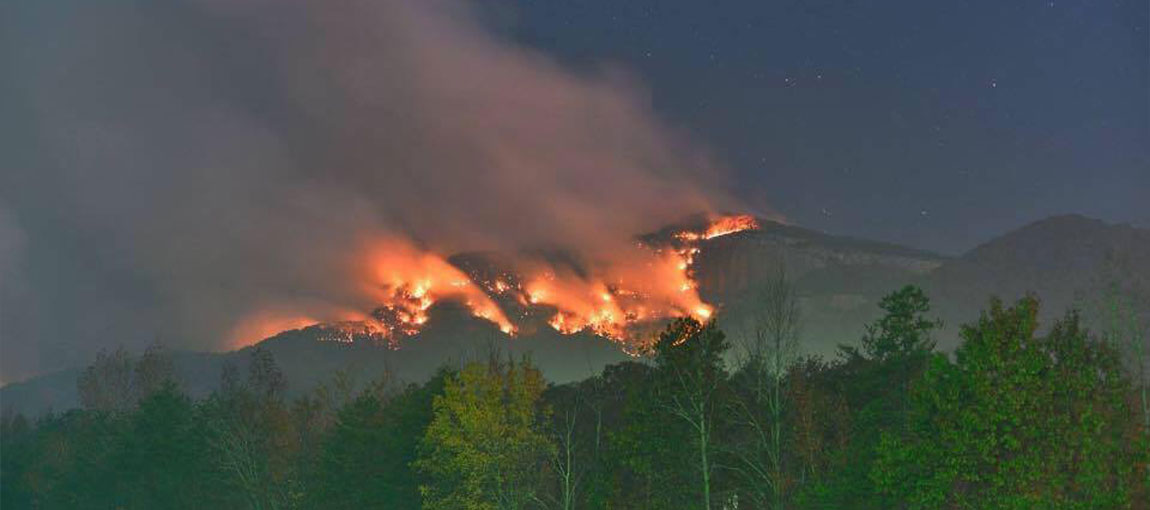Drought
According to NOAA’s Storm Events Database, from 2008 through March 2020, Greenville County has experienced 10 drought events.
Earthquake
While far less common than in other parts of the world, South Carolina has experienced more than 200 minimal earthquakes since 2001. The Brevard Fault Zone and the Pax Mountain fault system cross into the northern part of Greenville County. In addition to these faults, the county is susceptible to earthquakes in other locations, especially near dams. According to the USGS, three earthquakes ranging from magnitude 2.2 to 2.5 have occurred in Greenville County since 1997. Most South Carolina Earthquakes occur in the Middleton Place-Summerville Seismic Zone in the low country. The most significant historical earthquake to occur in South Carolina was the 1886 Charleston/Summerville earthquake. That earthquake was the most damaging earthquake to ever occur in the eastern United States. In terms of lives lost, human suffering and devastation, this was the most destructive United States earthquake in the 19th century.
Flooding
According to the South Carolina State Hazard Mitigation Plan, historically Greenville County has the highest number of annualized losses and the highest number of flood-loss causing events. Greenville County is affected by four types of flooding: 1) Dam/Levee Failure; 2) Local Drainage Problems; 3) Flash Flooding; and 4) Riverine Flooding.
Flash flooding occurs when heavy rainfall in a short period of time accumulates in areas faster than the ground is able to absorb it. According to the National Oceanic and Atmospheric Administration’s (NOAA) Storm Events Database, from 2008 through March 2020, 24 flash flooding events have been reported in Greenville County, resulting in two deaths and over $3.3 million in damage.
Riverine flooding occurs when an increase of water volume within a river channel causes an overflow onto the surrounding flood plain. Greenville County’s topography, combined with its humid, subtropical climate, makes it highly vulnerable to riverine flooding.
Greenville County has experienced over 112 flooding events since 1970 – three significant flooding events occurred between 2003-2005, resulting in more than $11 million in crop and property damage.
Hurricane / Tropical Storm
Although hurricanes are primarily thought of as a coastal phenomenon, inland counties may be directly affected by these storms. Inland flooding poses the greatest threat to life and property for Greenville County. Tornadoes, high winds, and heavy rain also accompany these storms.
In 1995, Tropical Storm Jerry dropped over 15″ of rain in some portions of Greenville County.
Infectious Disease Outbreak or Other Public Health Emergency
Infectious disease outbreaks or other public health emergencies may occur in Greenville County with little or no notice. Infectious disease can present special requirements for disease surveillance, rapid delivery of vaccines, antibiotics, or antiviral drugs, allocation of limited medical resources, and expansion of health care services to meet a surge in demand for care.
Severe Thunderstorms, Tornadoes, and Lightning
According to NOAA’s Storm Events Database, from 2008 through March 2020, Greenville County experienced 204 thunderstorm wind events resulting in one injury and $750,000 in damage, three lightning events resulting in one injury and $225,000 in damage, and 196 hail events.
Tornadoes in Greenville County occur most often in March, April, and September, but can happen at any time. Though they are typically weaker compared to tornadoes in other regions, damage can be extensive from strong winds and large hail.
In April 2020, Greenville County was hit by three tornadoes. Two of them were EF2 tornadoes with estimated maximum wind speeds between 115-120 mph. Multiple homes were destroyed or majorly damaged and three people were injured.
Severe Winter Weather
Snow, ice storms, and extremely cold temperatures periodically threaten Greenville County. Winter storms can damage property, create safety risks, destroy crops and valuable timber, damage infrastructure components, such as power lines, and have enormous economic impacts.
According to NOAA’s Storm Events Database, from 2008 through March 2020, Greenville County experienced eight heavy snow events, nine winter storm events, and 29 winter weather events.
In December 2005, a winter storm producing ice and snow across the Upstate of South Carolina, including Greenville County, caused almost $1.5 million in property damage due to power outages and housing unit damage from falling limbs and trees. The winter storm resulted in a Presidential Disaster Declaration in January 2006.
Wildfire
As the population of Greenville County grows and residential developments continue to expand into forested areas, wildland urban interface issues increase and more wildfires threaten homes. According to the South Carolina Forestry Commission (SCFC), 98% of the wildfires are caused by human activities. The leading causes are careless outdoor burning and arson. Wildfires can occur any time of the year, but the height of the wildfire season usually occurs from late winter through spring.
On November 9, 2016, the Pinnacle Mountain fire began in Pickens County due to an escaped campfire in Table Rock State Park. This fire is the largest mountain wildfire on record in South Carolina. The fire expanded into Greenville County on November 20, 2016 and burned a total of 10,623 acres, approximately 5,200 of which were in Greenville County. Preliminary cost estimates of this fire are over $4.5 million.





